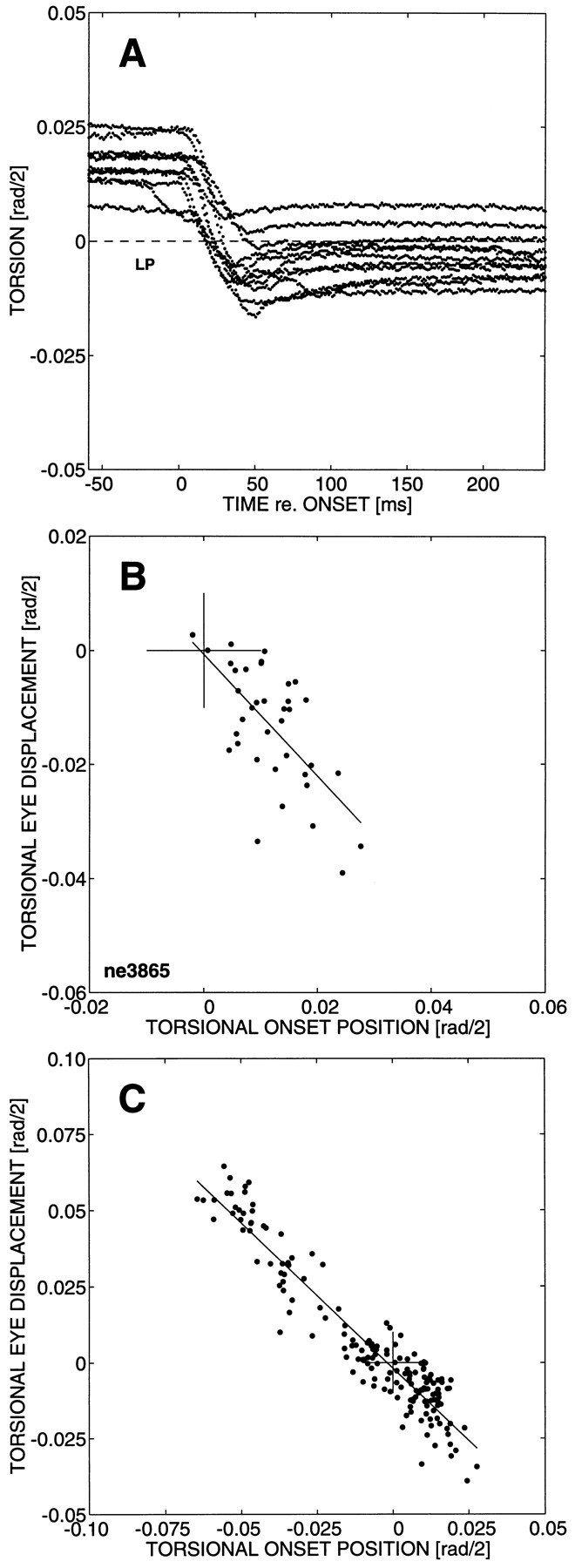Fig. 7.

Torsional resets of spontaneous saccades after the offset of the electrical stimulus train. A, Electrical stimulation at site NE3865 (see Fig. 5D) had brought the eye out of Listing’s plane into the positive torsional direction (up to ∼2.5 deg). The first spontaneous saccade after the stimulus train had stopped (saccade onsets aligned with time = 0 msec) brings the eye immediately back to a narrow band surrounding Listing’s plane.B, The torsional displacement of the first spontaneous saccade after stimulation compensates well for the onset position of the torsional component. Linear regression yielded a slope of −1.07 (r = −0.65; N = 67). C, Including the data of Figure 6, the range of torsional onset positions has been dramatically expanded. The torsional reset of the spontaneous saccades immediately after stimulation is almost perfect: slope of the regression line −0.95 (r = −0.96; N = 167).
